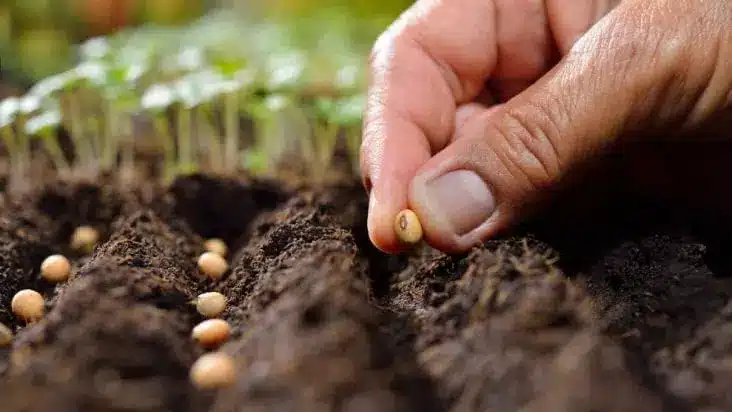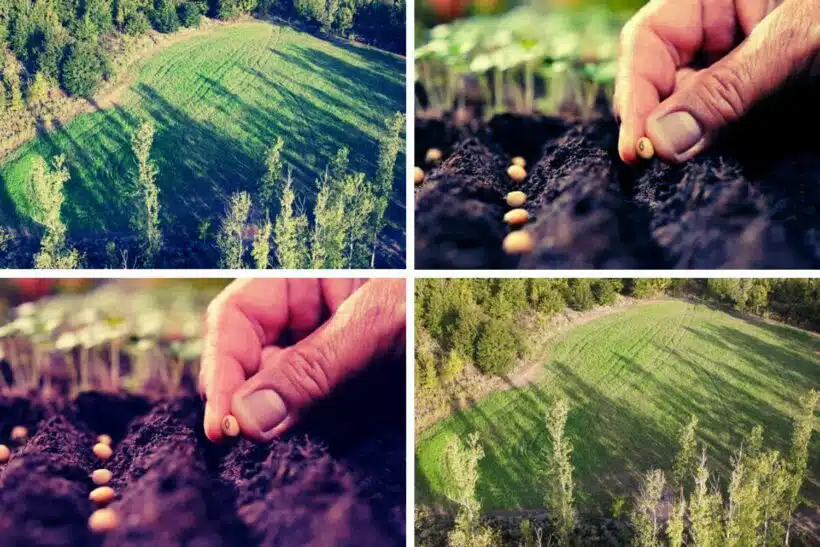Are you interested in growing your own food and enjoying the satisfaction of a bountiful harvest? Establishing and maintaining a personal food plot is a rewarding endeavor that allows you to take control of your food supply. In this guide, we will walk you through the essential steps to create and nurture your own thriving food plot.
Step 1: Planning Your Food Plot

Before diving into the dirt, careful planning is key. Start by selecting an ideal location for your food plot, ensuring it receives adequate sunlight and drainage. Consider the proximity to a water source for irrigation purposes. Assess the soil quality and pH levels to determine the necessary amendments for optimal plant growth. Conduct a soil test to understand its composition and nutrient content. This will help you determine the specific fertilizer requirements for your crops. Additionally, consider the plot size and shape, taking into account the available space and your specific needs. A larger plot allows for a greater variety of crops, while a smaller one may be more manageable for beginners.
Step 2: Preparing the Soil
Preparing the soil is an important step in establishing a healthy food plot. Begin by clearing the area of any existing vegetation, rocks, or debris. This can be done manually or with the help of equipment such as a tractor or a tiller. Once cleared, you can proceed with tilling the soil to break up any compacted areas and improve aeration. This will help the roots of your plants penetrate the soil easily and access nutrients. Consider using a harrow or a rotary tiller for efficient soil preparation. Additionally, incorporating organic matter such as compost or well-rotted manure can improve soil structure and fertility. Spread the amendments evenly and incorporate them into the soil using a rake or a garden fork. This will provide a nutrient-rich environment for your crops to thrive.
Step 3: Choosing the Right Seeds and Crops

Selecting the right seeds and crops is crucial for a successful food plot. Research the crops that are well-suited to your climate, soil type, and the specific purpose of your food plot. Consider planting a mix of annuals and perennials to ensure a continuous supply of fresh produce. For wildlife enthusiasts, incorporating plants that attract pollinators and provide habitat for beneficial insects can help create a balanced ecosystem in your food plot. Some popular choices for food plots include corn, soybeans, clover, brassicas, and sunflowers. Pay attention to seed quality and purchase them from reliable sources. Opt for certified organic or non-GMO seeds if that aligns with your preferences.
Step 4: Planting Techniques
When it comes to planting, you have a variety of techniques to choose from, depending on the crops you have selected. Seed broadcasting involves spreading the seeds by hand or using a seed spreader across the prepared soil surface. This method works well for small seeds like clover or when creating a mixed cover crop.
Alternatively, drill planting is more precise and efficient, especially for larger seeds such as corn or soybeans. It involves using a seed drill or planter to place the seeds at the desired depth and spacing. Follow the instructions provided by the seed supplier for optimal seed depth and spacing. Proper seed-to-soil contact is essential for germination, so ensure that the seeds are covered with soil according to the recommended depth. Using equipment like tractors can significantly speed up the planting process, especially for larger food plots. Tractors equipped with seeders or planters provide precise and uniform seed placement.
Those work days can be long, so make sure that your tractor is equipped with all the necessary accessories like a comfy seat, a footrest, and a John Deere tractor canopy that will protect you from the sun.
Step 5: Maintaining Your Food Plot
Maintaining your food plot requires regular attention and care. One of the key factors in successful plant growth is providing adequate water. Depending on your location and climate, you may need to irrigate your food plot to ensure consistent moisture levels. Monitor the soil moisture regularly and water as needed, taking care not to over water as it can lead to root rot or disease.
Weed control is another important aspect of food plot maintenance. Weeds compete with your crops for nutrients, water, and sunlight. Implement a weed control strategy that suits your preferences and the scale of your food plot. This can include manual removal, mulching, or the careful application of herbicides. Be sure to follow all safety instructions and guidelines when using herbicides.
Additionally, protecting your food plot from pests and wildlife is crucial. Install physical barriers like fences or utilize deterrents to prevent deer, rabbits, or other animals from damaging your crops. Scare devices, such as noise-making devices or reflective materials, can also help deter birds and other pests.
Step 6: Harvesting and Replanting
The joy of growing your own food plot culminates in the harvest. Each crop has its optimal harvest time, so pay attention to the specific requirements of the plants you have grown. Harvest your crops when they are at their peak ripeness to enjoy the best flavors and nutritional value. Depending on the crop, harvesting techniques can vary.
Some crops, like corn or soybeans, require mechanical harvesting with specialized equipment. Others, such as leafy greens or tomatoes, can be harvested by hand. Once harvested, store your produce properly to maintain its freshness and quality. This can involve refrigeration, canning, freezing, or dehydrating, depending on the crop and your preferences.
To ensure a continuous food plot, consider replanting crops at appropriate intervals. This rotation allows for the replenishment of nutrients in the soil and reduces the risk of disease and pest buildup. Plan your crop rotation carefully to maximize the productivity and sustainability of your food plot.
Conclusion
Establishing and caring for your personal food plot is a rewarding journey that provides an abundant supply of fresh and nutritious food. By following this comprehensive guide, you can create and maintain a thriving food plot. Remember, utilizing equipment like John Deere tractor canopies can enhance the efficiency and enjoyment of your food plot experience. However, the success of your food plot ultimately depends on your dedication, attention to detail, and willingness to adapt and learn from the process. So, get your hands dirty, embrace the joy of growing your own food, and start reaping the benefits of your very own food plot today.






